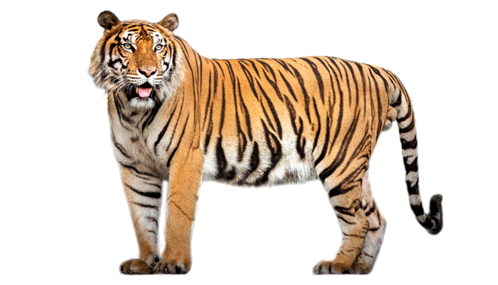By Michael Milroy, PhD Mechanical Engineering
The beauty seen in creation shows that neo-Darwinian evolution is not the most reasonable explanation for what we see in the world around us. Here the term “beauty” will be used to indicate the visible aspects of plants and animals that are pleasing to the eye, and are in excess of what is purely functional. Some examples of this beauty are: coloration, length, orientation and arrangement of fur, feathers and scales. Also the arrangement and coloration of leaves and petals. The term “perfect” means that the beauty is without apparent defect, not that it has the perfection that existed before the Fall in the Garden of Eden.
Evolution supposedly works by natural selection acting on random mutations, which accidentally change the coloration, length, orientation and arrangement of things on an organism through DNA copying errors. The concept of mutations and natural selection to create and modify life is at best a dubious process, and evolution would have extreme difficulty in producing the perfect beauty found in creation. The word “perfect” is used to convey that we humans cannot picture how to improve on the design. This beauty is also complex. Here the term “complex” refers to the staggering number of variables that must be specified to achieve this perfect beauty. For examples of “complex”, consider the huge numbers of hairs on a tiger, or scales on a fish that have to be specified. The argument here is that beauty is both too perfect and too complex to have evolved.

Figure: Tiger fur location, length, direction and coloration is perfect (image from Shutterstock)
Examples of perfect beauty too complex to evolve:
- The fur on an animal. A house cat has about 40 million hairs, a tiger has far more. On these cats, each hair is pointed the proper direction, grows to the correct length, has the right coloration, and does not grow on the paws or lips. How many tries would evolution have to take to get 40 million hairs correct? Not just roughly correct so the animal wouldn’t get cold, but perfectly correct? Such beauty is not due to evolution!
- Coloration too is a thing of beauty, and a further mystery to evolution. The stripes on a zebra or a tiger, the spots on a leopard, and the eyes and lacy stripes on the wings of a butterfly. No defects (discontinuities or blemishes) or missed areas are seen in these patterns that supposedly arose by trial and error. The patterns even vary from animal to animal, like the distinct fingerprints on a human.
- The number of petals on flowers and the arrangement of sunflower seeds follow the amazing Fibonacci series.
- The complex coloration on a flower.
- It is likely that every animal, bird, fish, insect and plant you can think of exhibits the beauty of perfection in its coloration, shape and exterior covering.
So how does this disprove evolution? Evolution has no mechanism to reach perfection! It stumbles along, making random changes typically one at a time. Then natural selection culls what is not fit for survival, favoring the organism if an improvement is detected. Then this improvement has to propagate through the population until it becomes “fixed”, that is until the great majority of the population has that change contained in their genes. Several improvements can propagate through a population at one time, but then many more generations are needed to fix the change into the genes. If natural selection needs to make an alteration to improve the fitness, there are so many variables (number of hairs, feathers or scales each with parameters like spacing, direction and length) that it would take billions of years just to tweak these variables one at a time on the organism.
Perfect beauty and the theory of sexual selection
The peacock tail is a magnificent example of beauty. The tail contains about 200 iridescent feathers with 170 eyes, all visible only from the front (Burgess, 2001 Journal of Creation 15, no 2). This paper continues on by giving too much amazing information to be discussed here. To try to explain this beauty, evolutionists have developed the theory of sexual selection. The paper describes this theory as follows: “…the peacock tail has gradually evolved because the peahen selects beautiful males for mating. However, there is no satisfactory explanation of how the sexual selection cycle can start or why the peahen should prefer beautiful features. In addition, there is irreducible complexity in both the physical structure of the feather and in the beautiful patterns.” And what about the beauty in things sexual selection cannot possibly be credited with, like galaxies, plants (which have no eyes), and the coloration on deep-sea fish that live in the dark?
Who made this perfect beauty?
Psalm 29:2 says “Give unto the Lord the glory due to His name; Worship the Lord in the beauty of holiness”.
Jesus is the one who created all this perfect beauty. But Adam and Eve sinned, plunging His perfect creation into corruption and decay. As a result, each of us has disobeyed God. But He came to redeem His creation by dying for us. Revelation 21:2 says “I saw the Holy City, the new Jerusalem, coming down out of heaven from God, prepared as a bride beautifully dressed for her husband.” Have you come to Him to receive a new heart, so that you can live in that perfect beautiful city?
